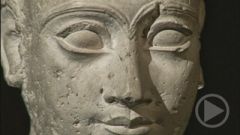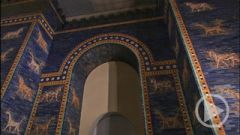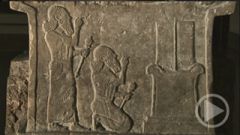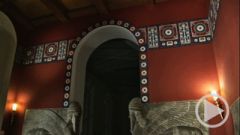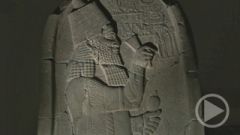- Home
- »
- Germany
- »
- Berlin
- »
- Museum Island
- »
- Pergamon Museum
- »
- The Museum of the Ancient Near East
- »
- The Pergamon Museum - Resurrecting the Walls of Babylon
Resurrecting the Walls of Babylon
Resurrecting the Walls of Babylon
James Simon was an industrialist and patron of the arts and sciences, who owned the world's largest cotton plant. In 1897, he agreed to finance a research trip to Mesopotamia. Robert Koldewey was named leader of the expedition. His mandate was to bring back spectacular archaeological finds for Berlin's museums. He did that in a most sensational manner. He brought new life to the legendary city of Babylon, and spent the next 18 years there before British troops drove him from the dig. In the First World War, he was forced to leave behind many of his finds. Koldewey had an assistant with him on his first excavation, about whom he wrote:
"I have an innocent boy with me who can't even tell the difference between a wolves' den and a mortise - but he paints and draws charmingly."
Little did Koldewey know that the young whippersnapper would leave a mark on the Near East museum matched by none other. His name was Walter Andrae. Andrae proved to be a brilliant student. After just a few months, he had reconstructed the famed Babylonian lions, unknown before then, out of small bits of brick. The young greenhorn was to become a master archaeologist. Koldewey sent him to Ashur, where Andrae excavated the city, the ancient capital of Assyria.
Finally, in 1928, Walter Andrae himself became the director of the Near East department. Shortly before that, the authorities in Iraq released Koldewey's finds. After ten years of uncertainty, 400 crates of broken bits arrived in Berlin. It was like an enormous jigsaw puzzle. And it had to be solved quickly because the new museum building was almost finished.
The first problem was that during the years in the ground, harmful salts had seeped into the glazed pieces of clay. Once they were excavated and exposed to the humidity of the air, they began to deteriorate at once. The restoration crews rinsed them over and over again in demineralised water. They used hundreds of tubs, Andrae even had part of the colonnade next to the National Gallery walled off to make room for them.
Then the real work began. The team faced one hundred thousand fragments of stone, no single piece bigger than a human fist. It wasn't even clear which bits belonged to which bricks or tiles. The restorers first sorted them by colour on long tables. Then in just two years of seemingly unending, painstaking work, they pieced together 42 figures of bulls, dragons and lions.
In order to make sure the surfaces between the reliefs were true to the original, the researchers also had to rediscover ancient glazing techniques. The Babylonians glazed 20,000 bricks by coating and firing them with a mixture of melted sand and ash, mixed with water and coloured with cobalt and copper oxide. But the technique had long since been forgotten. A tile maker in Brandenburg finally succeeded in perfectly glazing tiles according to the old model.
Among other difficulties, the brilliant visionary Walter Andrae had to fight the Prussian bureaucrats with their lack of imagination.
Evelyn Klengel-Brandt, director of the museum from 1991-1997:
"He reported that when it came to reconstructing the Ishtar Gate, people said 'well, all the animals look alike. We can just do one of each kind and that will be enough'. So he managed to persuade the scenic painters from the State Opera to paint a huge backdrop with animals, and had it put in the spot where the gate was to go . And all the decision makers were invited to come and look. Once they'd seen it, they were convinced and agreed that the whole gate including all the similar animals had to be reconstructed."
When the Pergamon Museum opened, the visitors were astounded by a sight that hadn't been seen, even in Mesopotamia, in thousands of years: the walls of Babylon.


